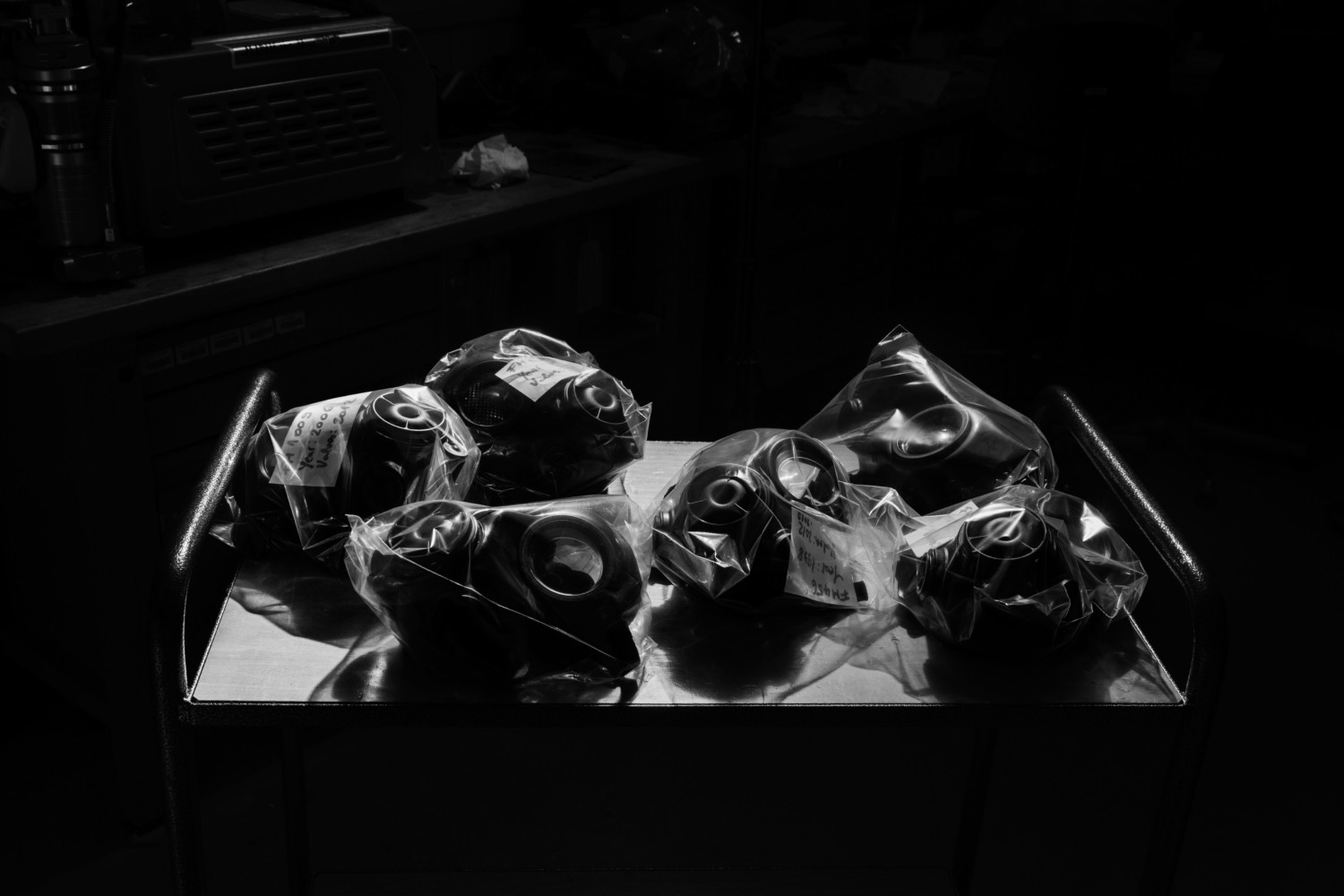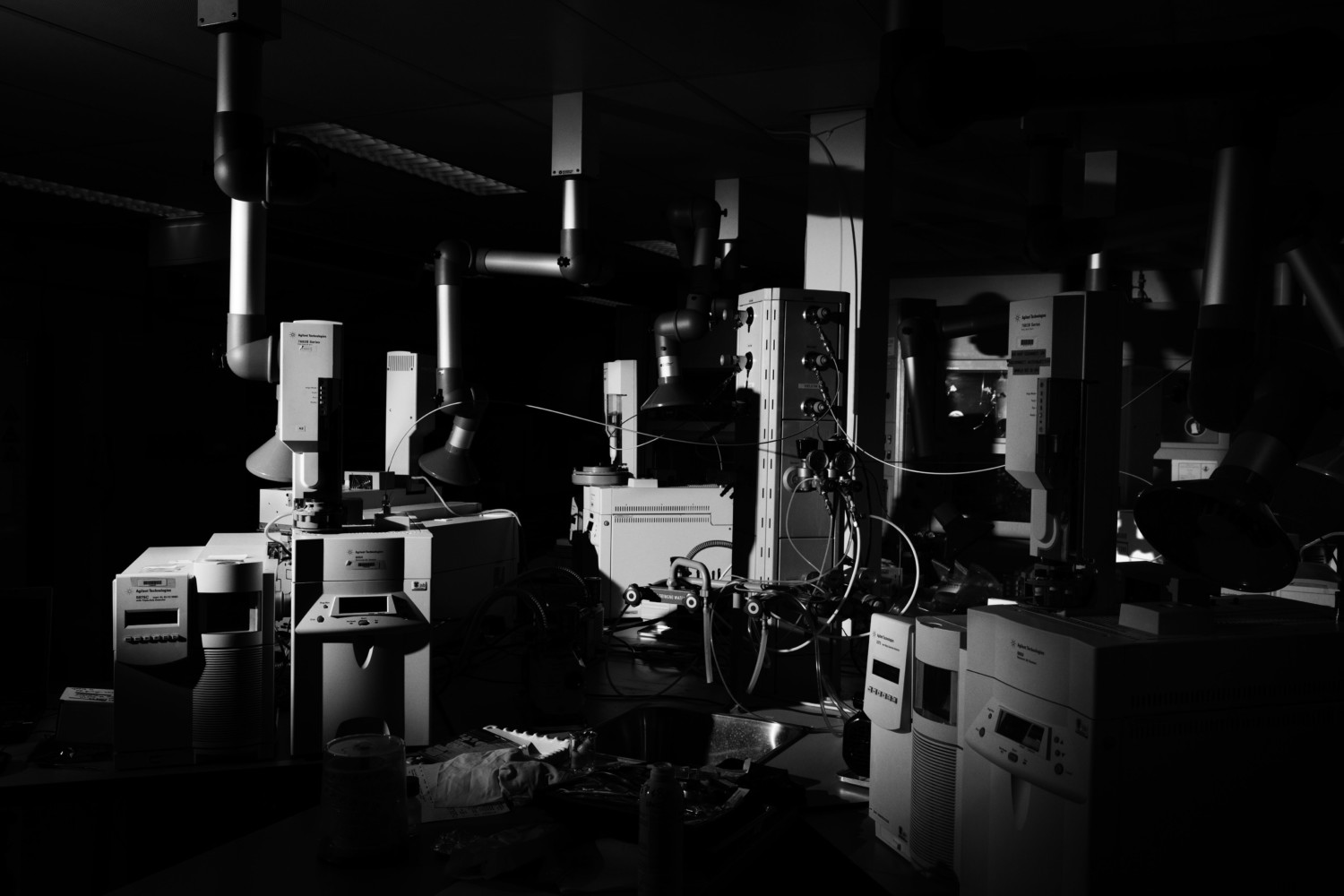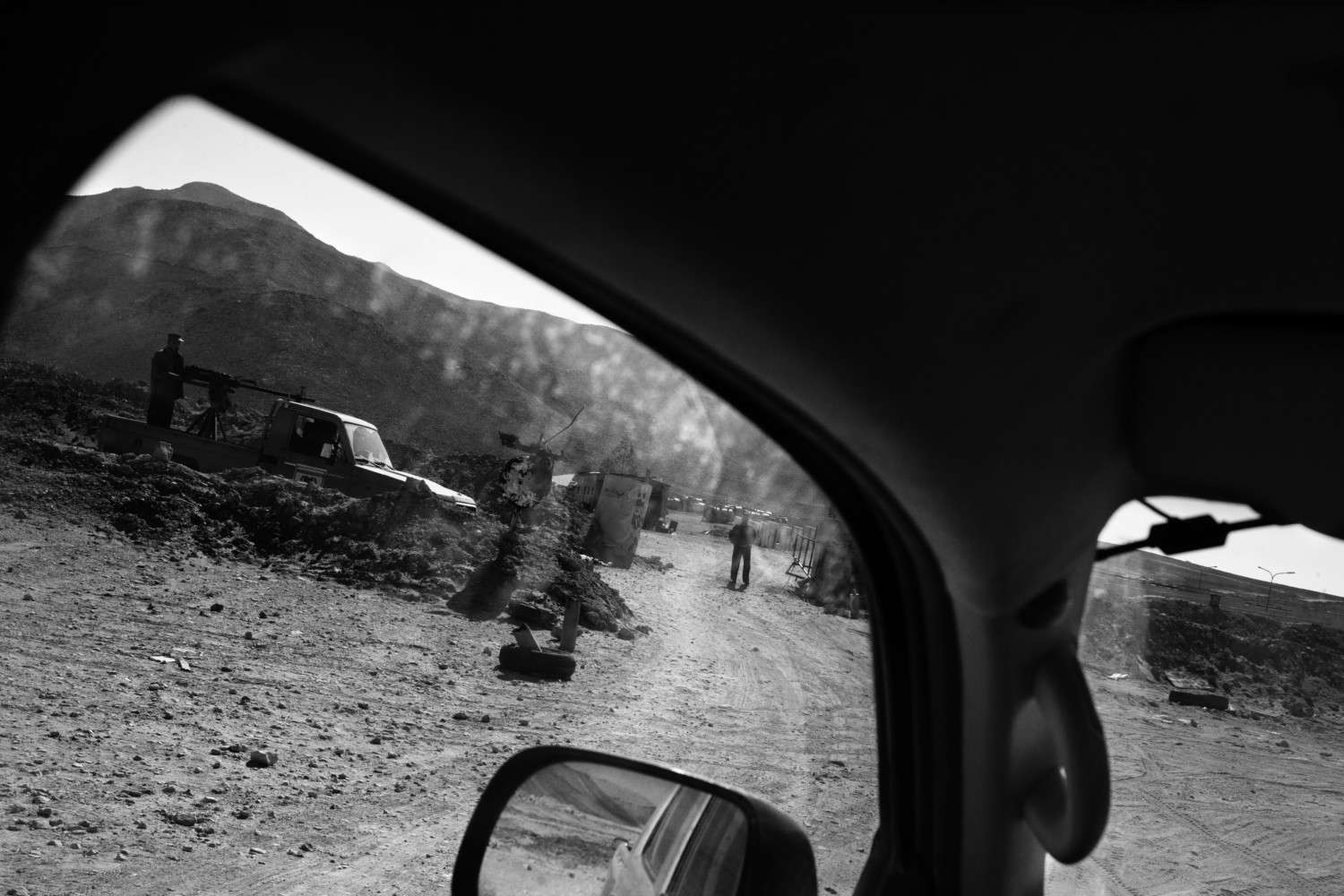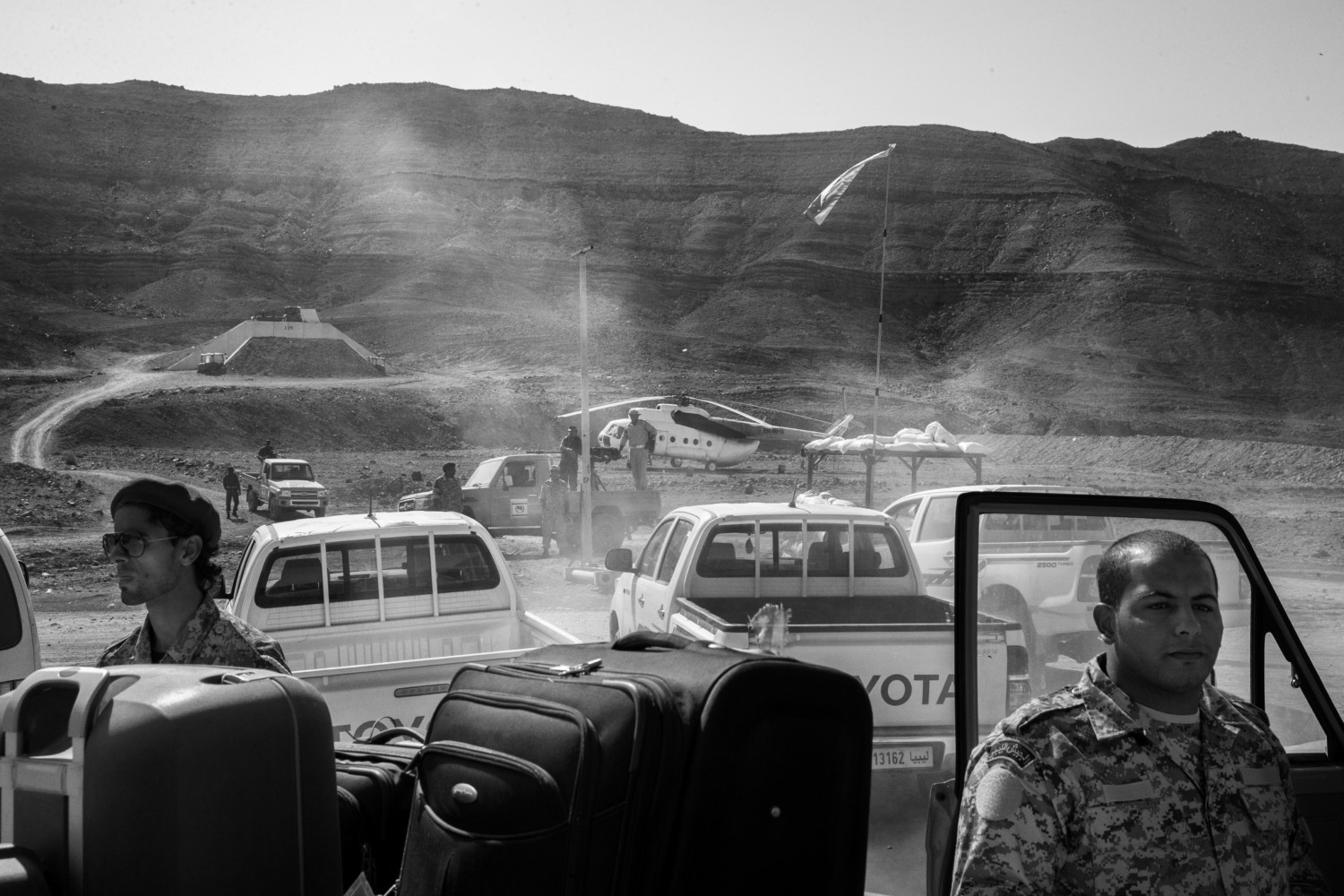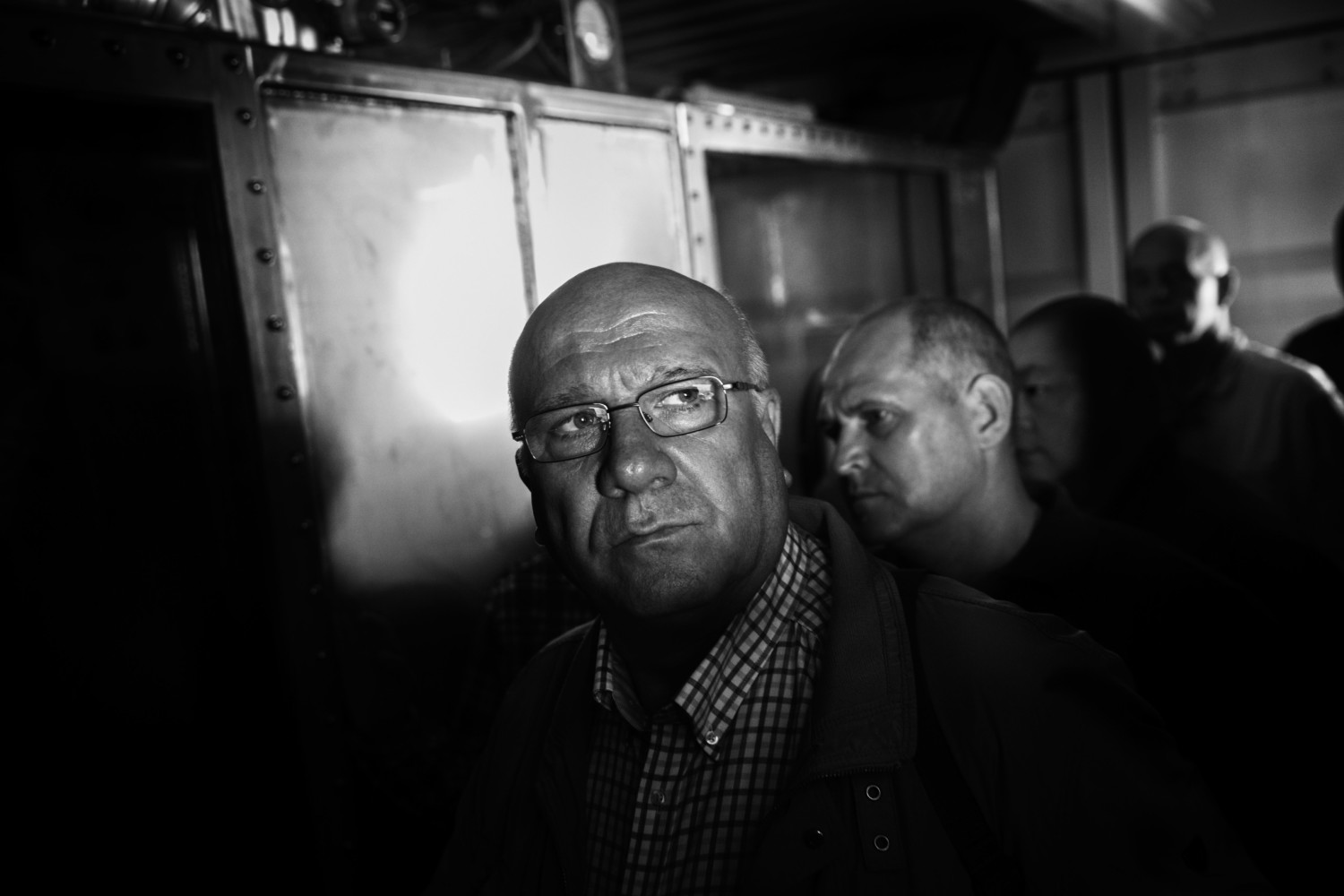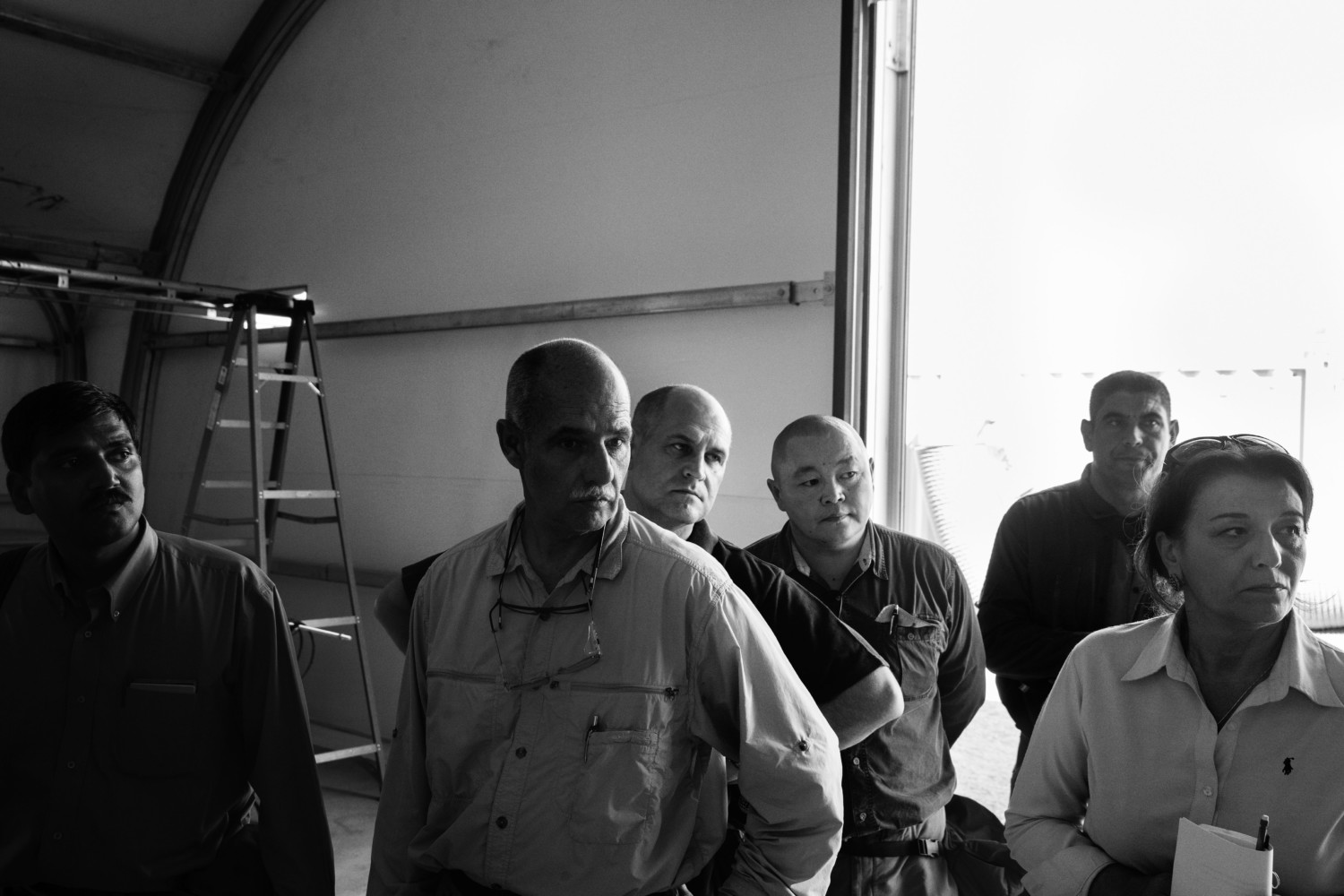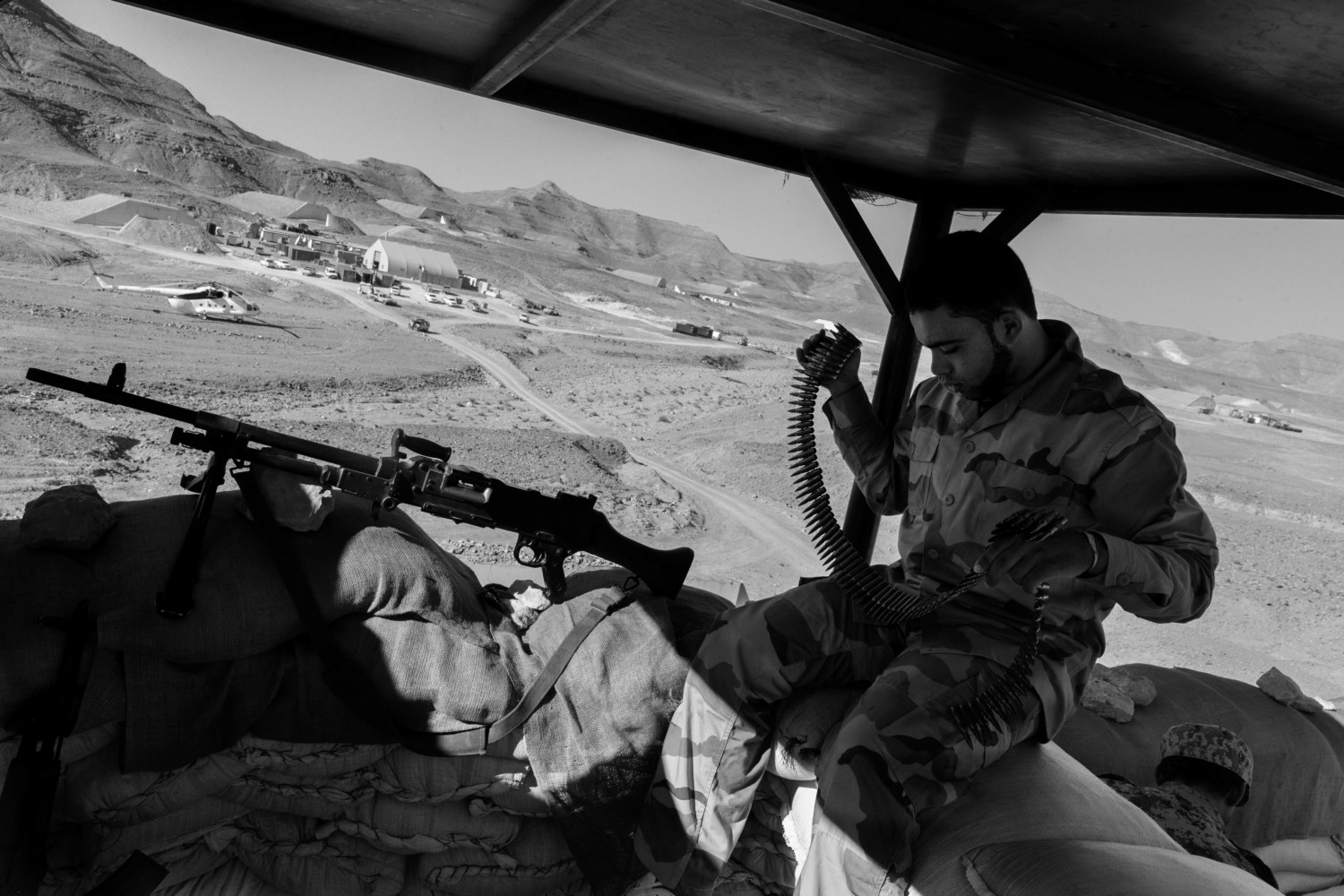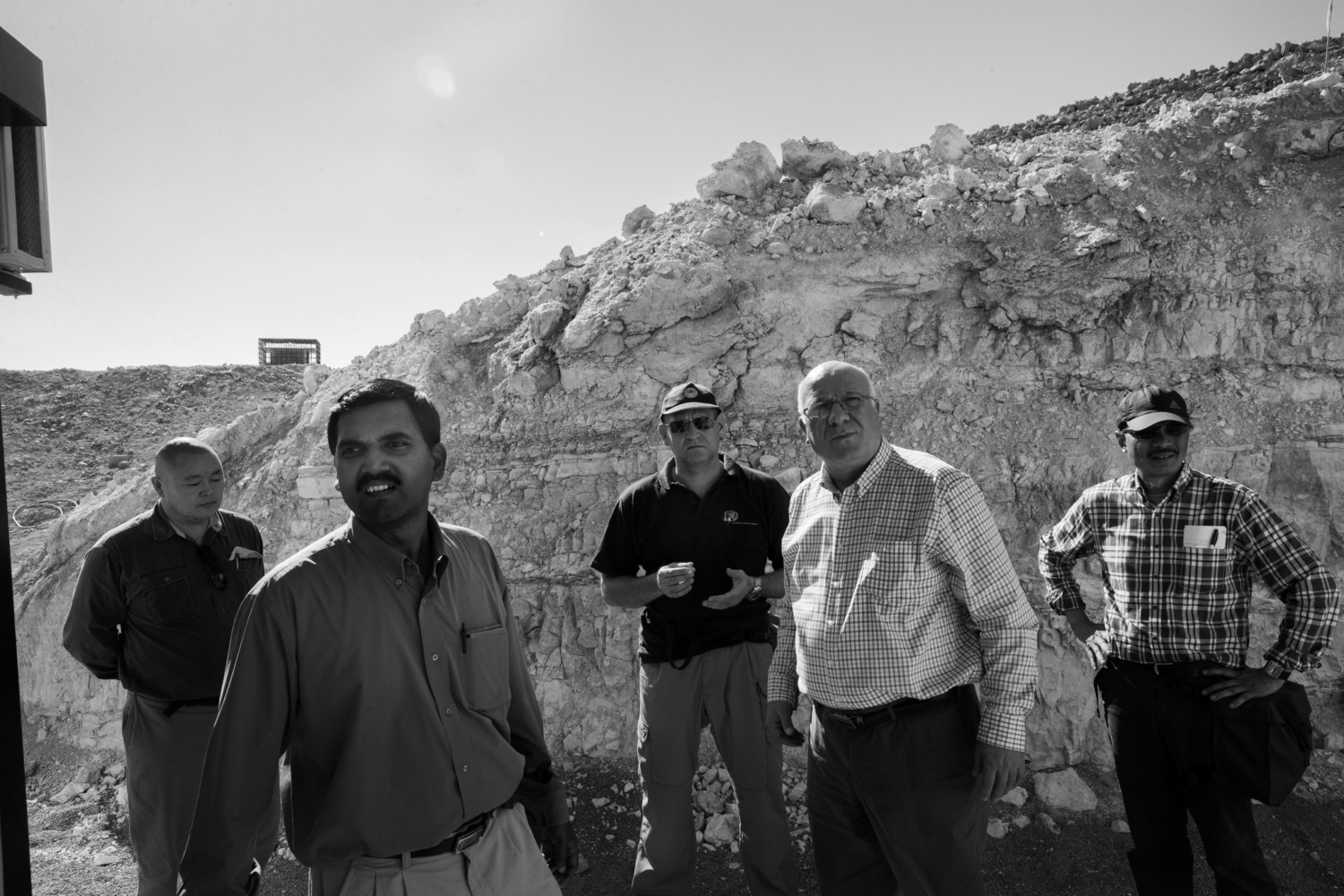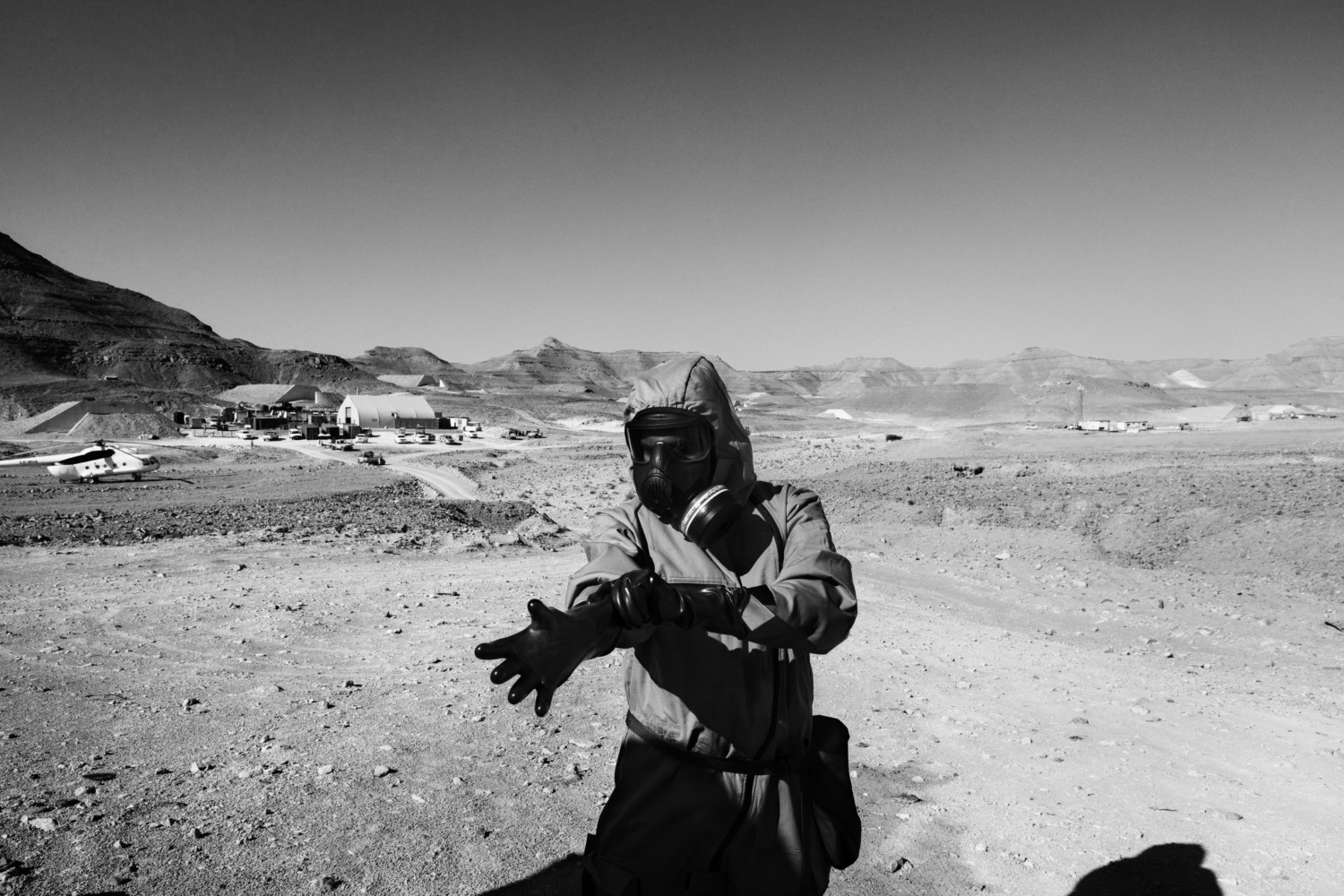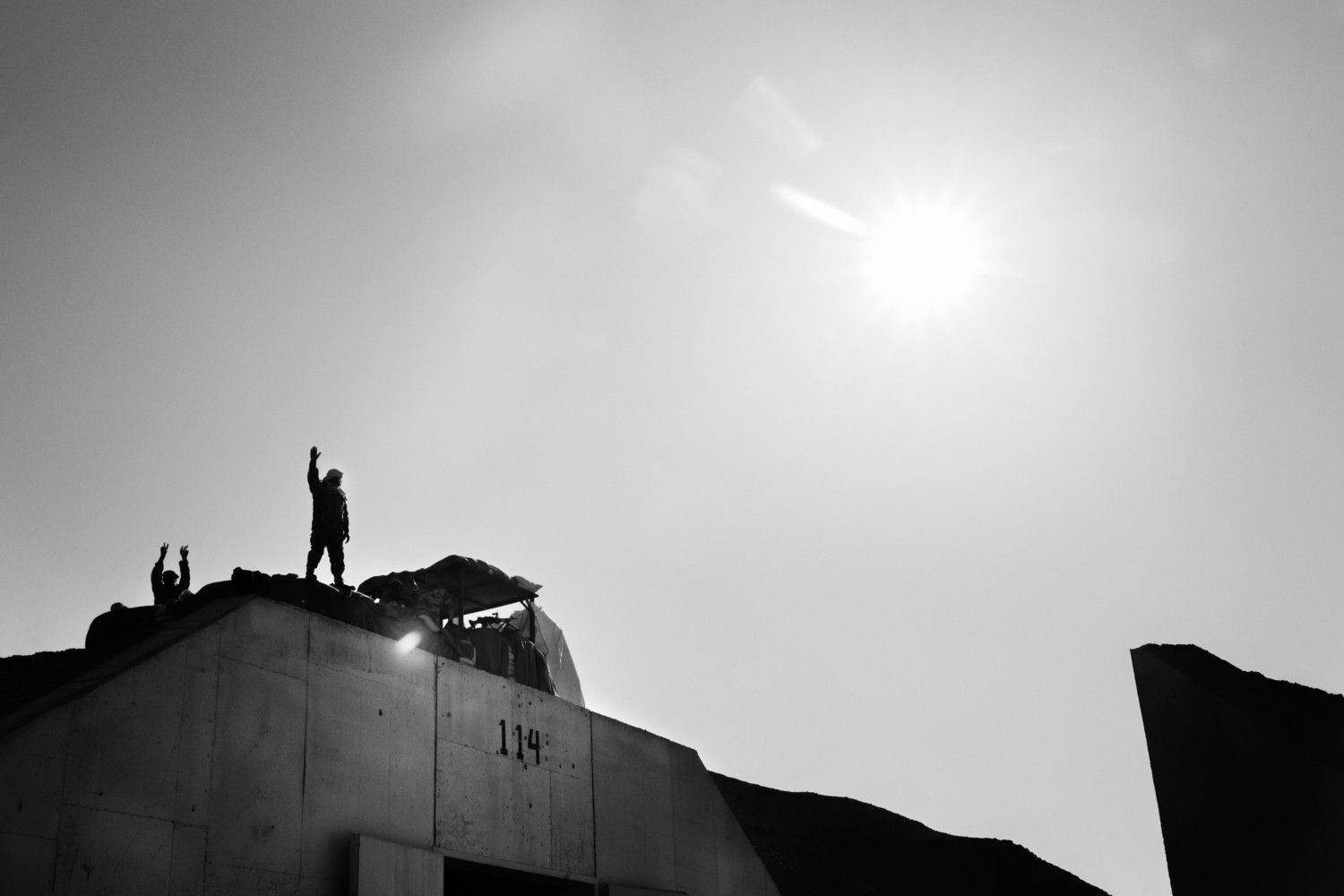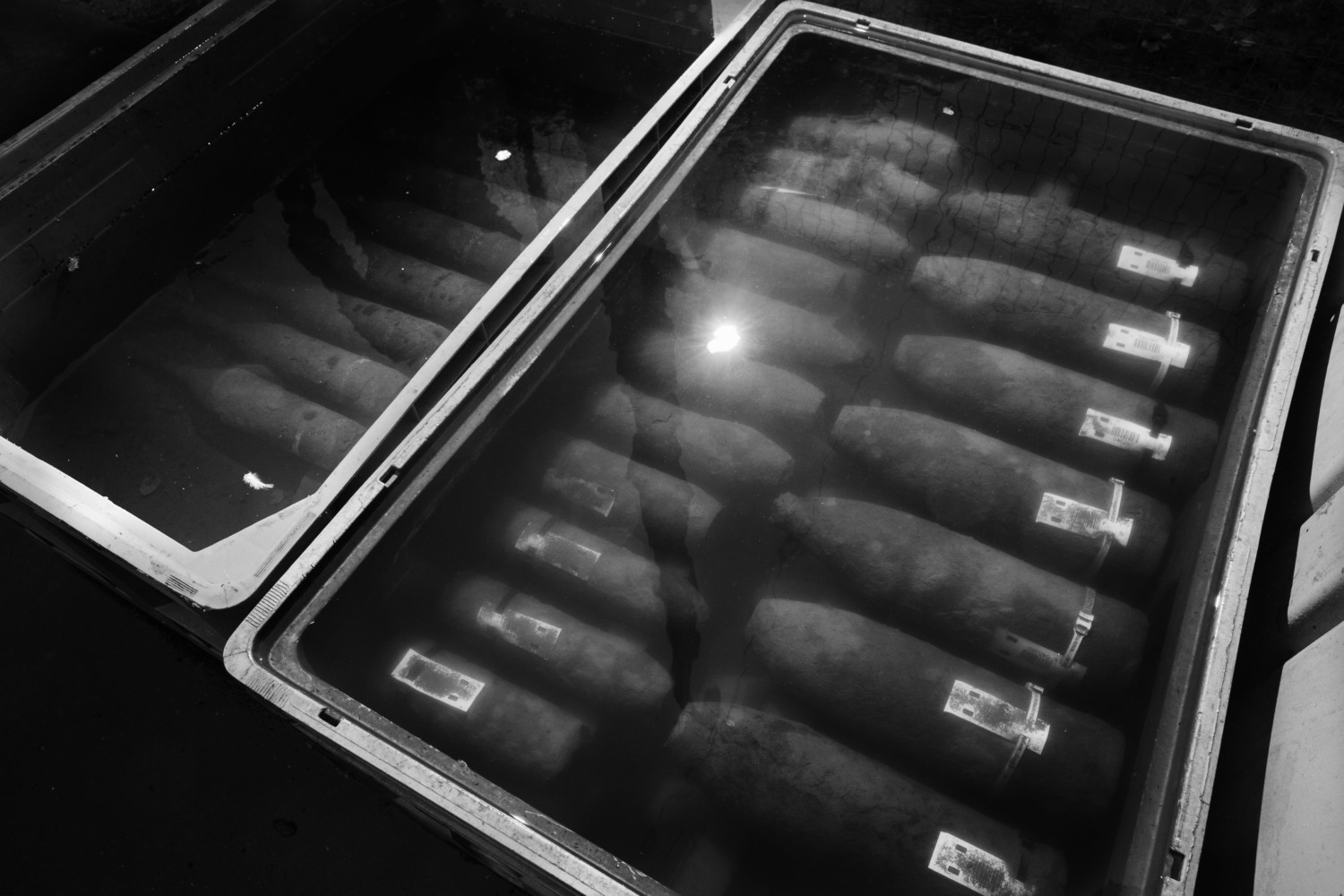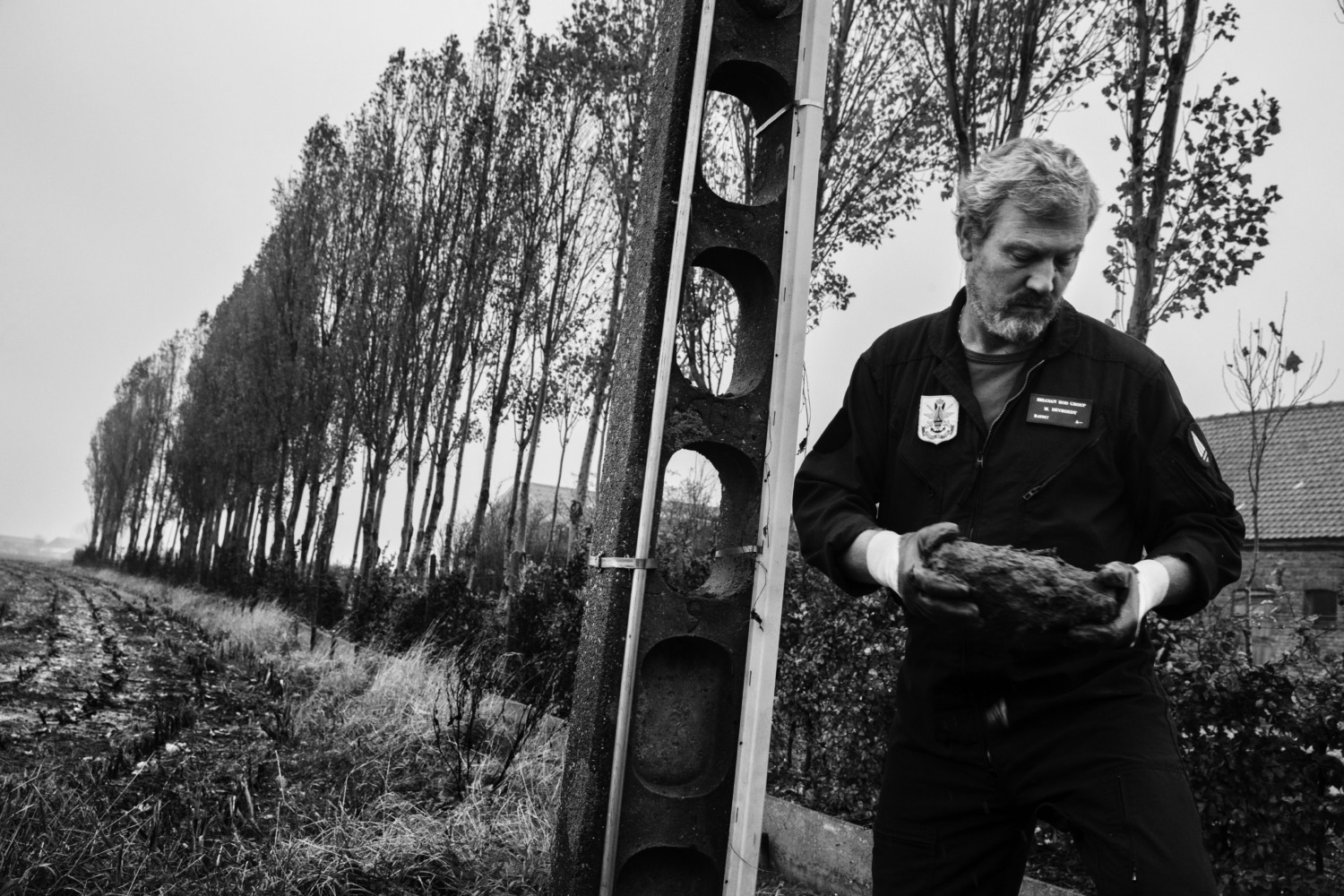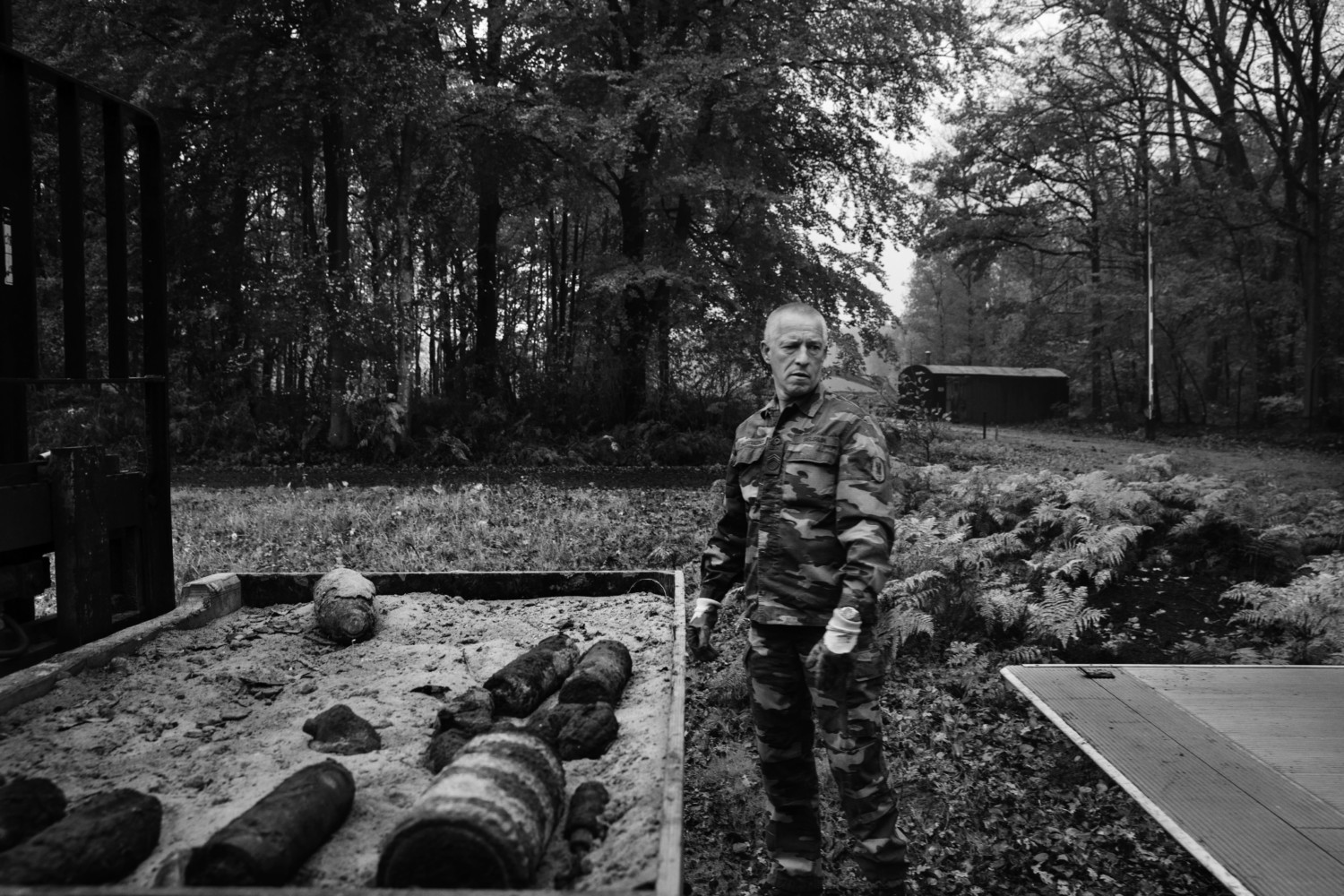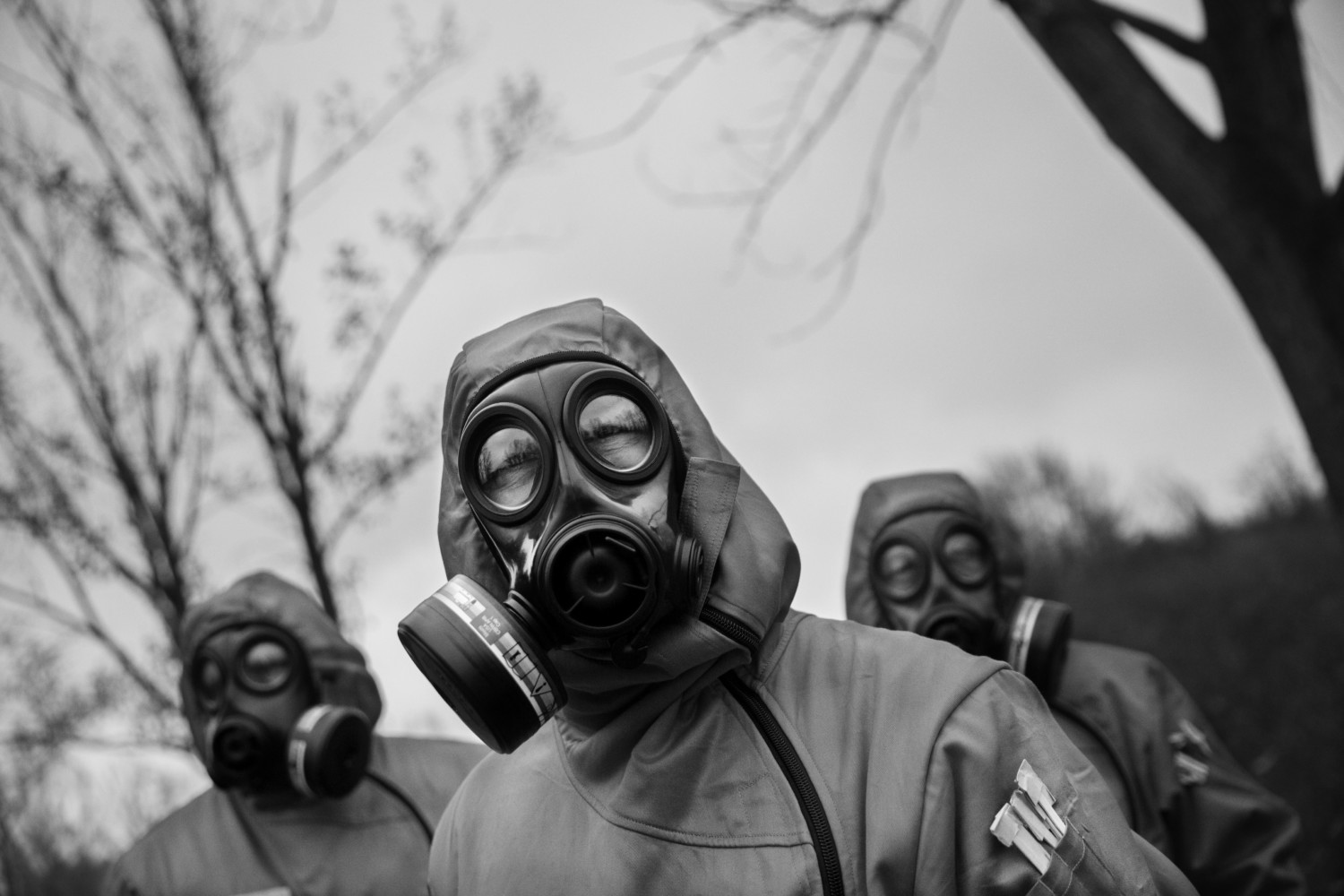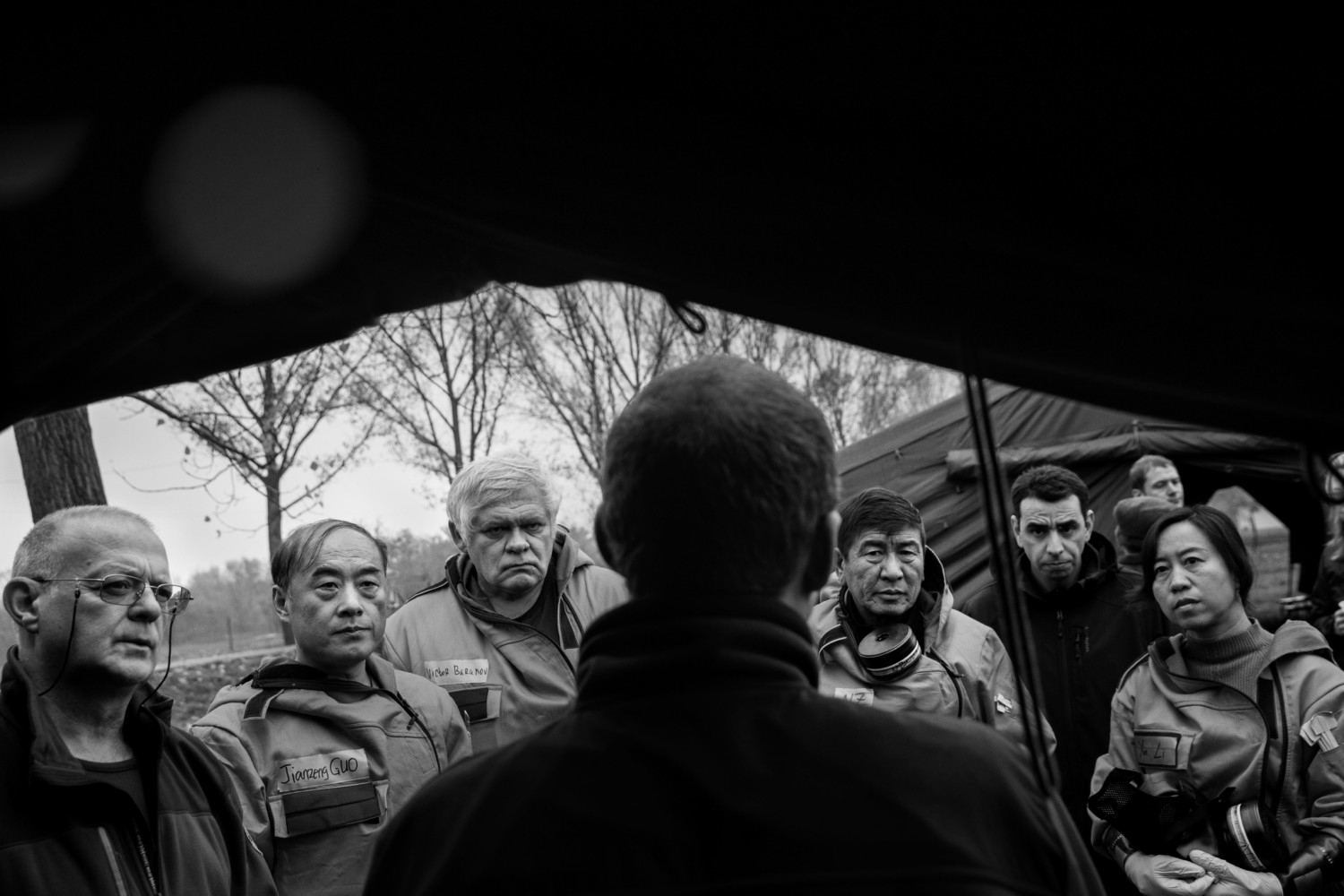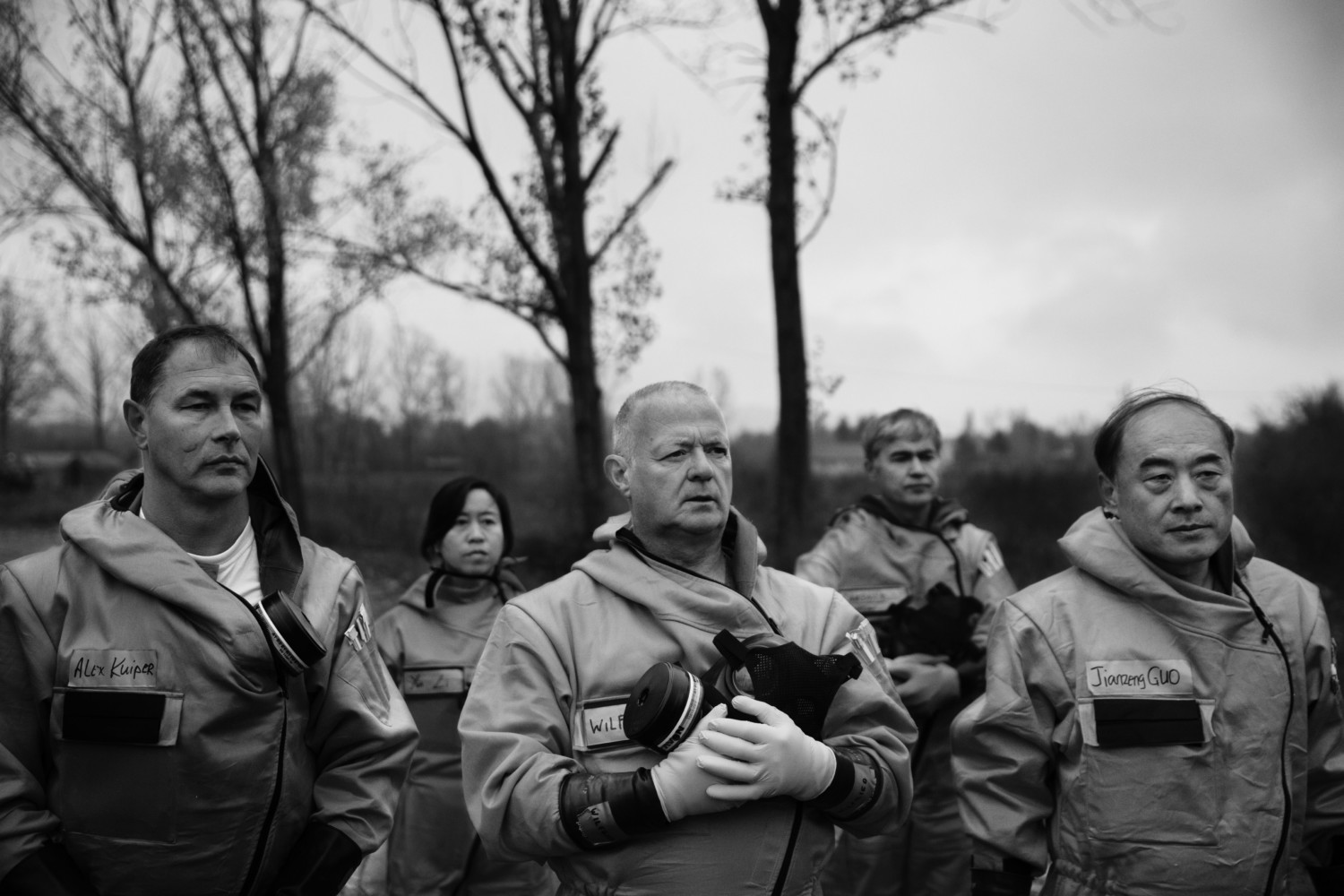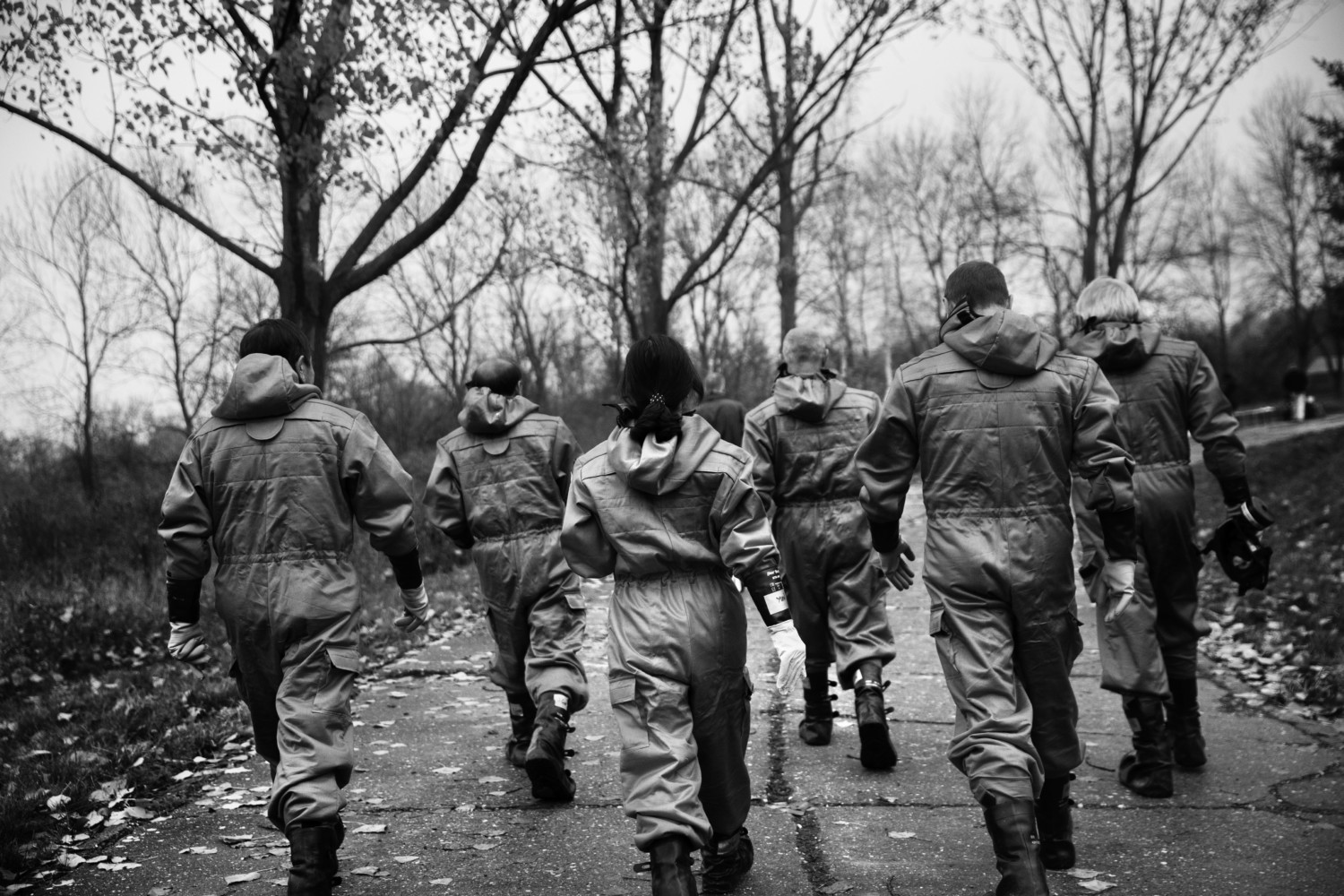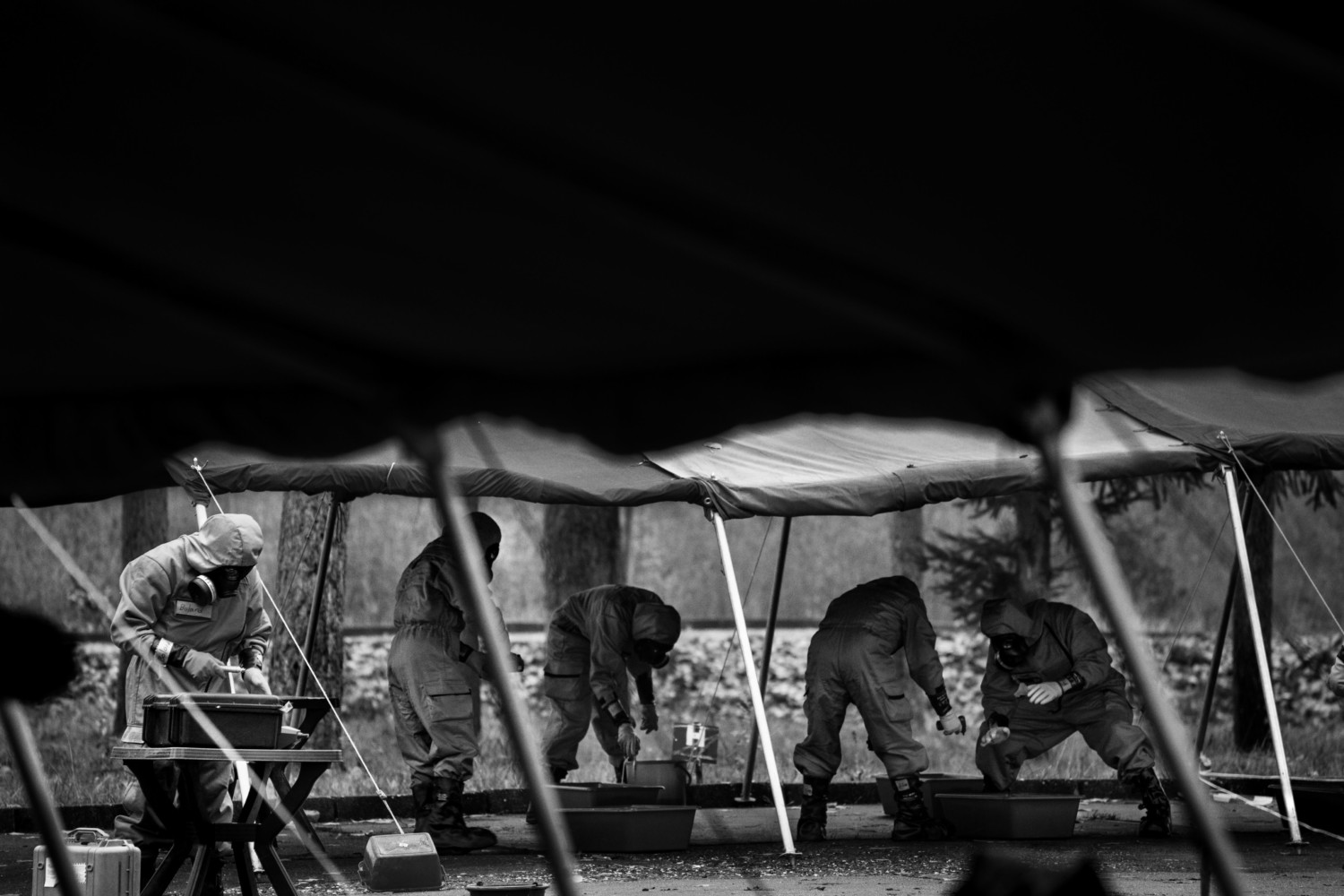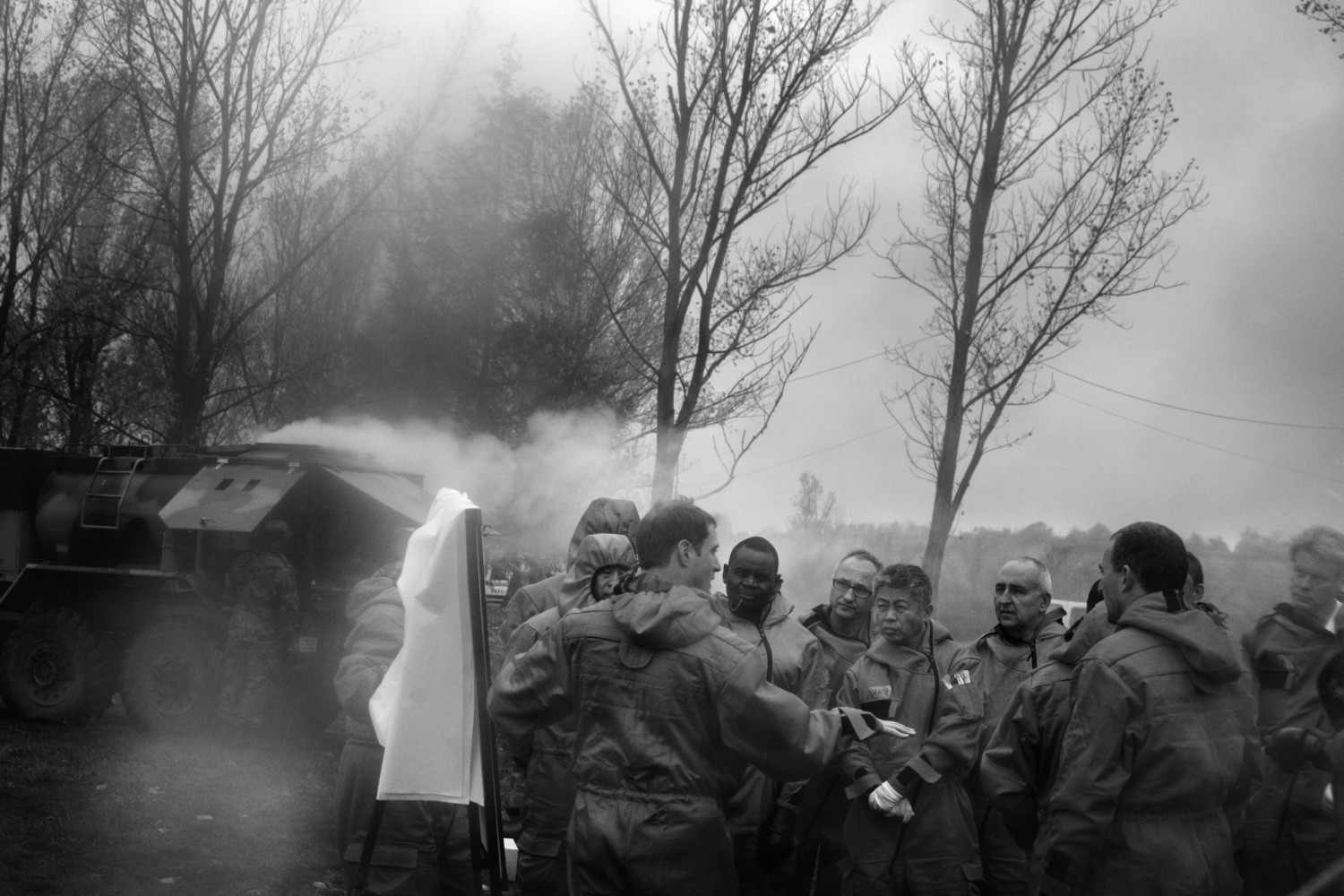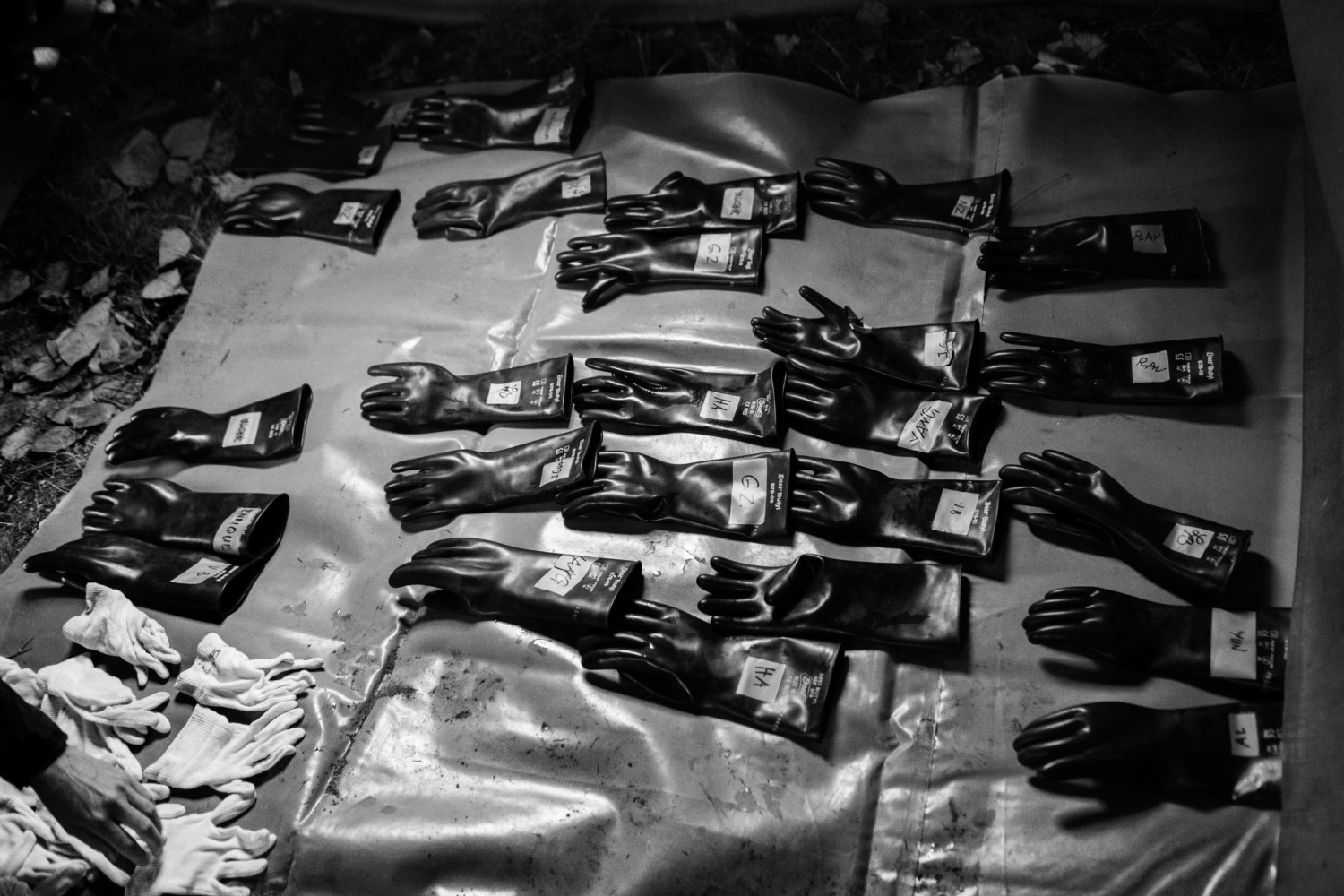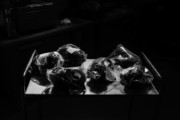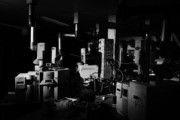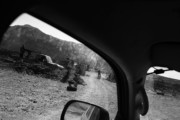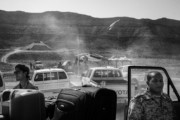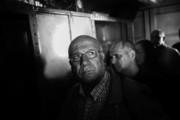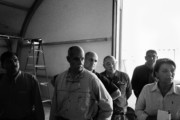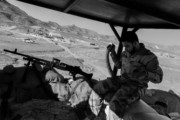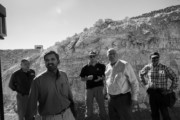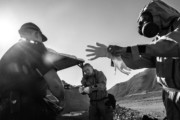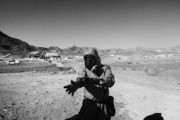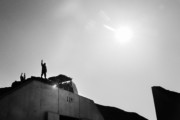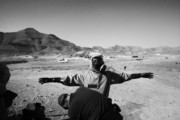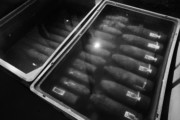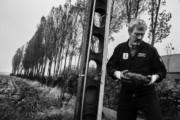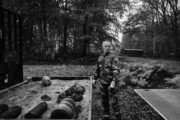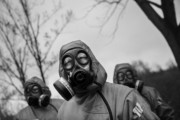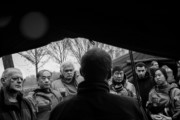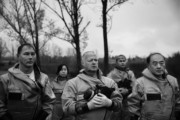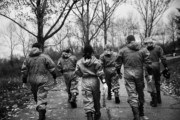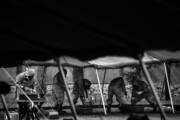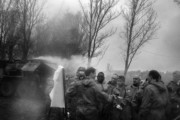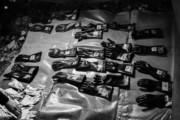Paolo Pellegrin LIBYA. Al Juffra region. A chief area of concern is a former military compound in southern Libya, where chemical weapons were stored in a number of bunkers. Today, the sprawling compound is heavily (...)
guarded by Libyan soldiers in preparation for the destruction of these weapons by Libyan authorities under the supervision of OPCW inspectors. In these photographs, a new team of OPCW inspectors has just arrived to begin their verification work. A helicopter is kept on site for swift evacuation in the event of any safety or medical incident. 2013. © Paolo Pellegrin | Magnum Photos
Paolo Pellegrin A chief area of concern is a former military compound in southern Libya, where chemical weapons were stored in a number of bunkers. Today, the sprawling compound is heavily guarded by Libyan soldie (...)
rs in preparation for the destruction of these weapons by Libyan authorities under the supervision of OPCW inspectors. In these photographs, a new team of OPCW inspectors has just arrived to begin their verification work. A helicopter is kept on site for swift evacuation in the event of any safety or medical incident. Al Juffra region, Libya. 2013. © Paolo Pellegrin | Magnum Photos
Paolo Pellegrin LIBYA. Al Juffra region. A chief area of concern is a former military compound in southern Libya, where chemical weapons were stored in a number of bunkers. Today, the sprawling compound is heavily (...)
guarded by Libyan soldiers in preparation for the destruction of these weapons by Libyan authorities under the supervision of OPCW inspectors. In these photographs, a new team of OPCW inspectors has just arrived to begin their verification work. A helicopter is kept on site for swift evacuation in the event of any safety or medical incident. 2013. © Paolo Pellegrin | Magnum Photos
Paolo Pellegrin OPCW inspector team in the Ruachra site. This is a chemical wepons site roughly 700 kilometers south east of Tripoli and is made up of several bunkers containing weaponized sulphur mustard gas.
(...)
An expressely designed facility has been built inside the area for the destruction of the weapons.
Al Juffra, Libya. 2013. © Paolo Pellegrin | Magnum Photos
Paolo Pellegrin A chief area of concern is a former military compound in southern Libya, where chemical weapons were stored in a number of bunkers. Today, the sprawling compound is heavily guarded by Libyan soldie (...)
rs in preparation for the destruction of these weapons by Libyan authorities under the supervision of OPCW inspectors. In these photographs, a new team of OPCW inspectors has just arrived to begin their verification work. A helicopter is kept on site for swift evacuation in the event of any safety or medical incident. Al Juffra region, Libya. 2013. © Paolo Pellegrin | Magnum Photos
Paolo Pellegrin It is so common for farmers and construction workers in southwestern Belgium to dig up unexploded ordnance from World War I battlefields that a very simple system has been established for its colle (...)
ction. Here, a Belgian soldier recovers an artillery shell from the recess of a concrete utility pole, placed there by the farmer who found it. Poelkapelle, Belgium. 2013. © Paolo Pellegrin | Magnum Photos
Paolo Pellegrin BELGIUM. Poelkapelle. Every year, an estimated 150 tons of unexploded ordnance is recovered from the old World War I battlefields of southwestern Belgium. Of this, an estimated 5% or some 7 to 8 to (...)
ns consists of live chemical weapons, mostly phosphorus artillery shells. With the technical assistance and oversight of the OPCW, the Belgian military employs a special unit to collect and destroy these volatile and highlytoxic munitions that have lain in the ground for nearly a century. 2013. © Paolo Pellegrin | Magnum Photos
Paolo Pellegrin Because their work is so extraordinarily dangerous exposure to certain types of chemical weapons in their concentrated form can cause death within seconds OPCW inspectors are kept in a constant sta (...)
te of alertness. When not in the field, inspectors undergo a series of live agent training sessions to maintain their readiness for their next field deployment. Krusevac, Serbia. 2013. © Paolo Pellegrin | Magnum Photos
Paolo Pellegrin The threat posed by chemical weapons affects peoples and nations throughout the world, as is illustrated by the multinational composition of the OPCW workforce. Among the 17 OPCW inspectors undergo (...)
ing training at the Serbian facility in mid- November 2013, are citizens from 12 different nations, including China, Russia, Mexico, Mongolia, Sweden, Belgium and Slovakia. Krusevac, Serbia. 2013. © Paolo Pellegrin | Magnum Photos
Paolo Pellegrin Because their work is so extraordinarily dangerous exposure to certain types of chemical weapons in their concentrated form can cause death within seconds OPCW inspectors are kept in a constant sta (...)
te of alertness. When not in the field, inspectors undergo a series of live agent training sessions to maintain their readiness for their next field deployment. Krusevac, Serbia 2013 © Paolo Pellegrin | Magnum Photos
Paolo Pellegrin Because their work is so extraordinarily dangerous exposure to certain types of chemical weapons in their concentrated form can cause death within seconds OPCW inspectors are kept in a constant sta (...)
te of alertness. When not in the field, inspectors undergo a series of live agent training sessions to maintain their readiness for their next field deployment. Krusevac, Serbia. 2013. © Paolo Pellegrin | Magnum Photos
Paolo Pellegrin The threat posed by chemical weapons affects peoples and nations throughout the world, as is illustrated by the multinational composition of the OPCW workforce. Among the 17 OPCW inspectors undergo (...)
ing training at the Serbian facility in mid- November 2013, are citizens from 12 different nations, including China, Russia, Mexico, Mongolia, Sweden, Belgium and Slovakia. Krusevac, Serbia. 2013. © Paolo Pellegrin | Magnum Photos
Paolo Pellegrin Most OPCW inspectors have advanced degrees in chemistry and, even more importantly, military backgrounds. As a result, they come into OPCW with an existing knowledge on the proper handling and disp (...)
osal of a broad range of munitions. Krusevac, Serbia. 2013. © Paolo Pellegrin | Magnum Photos
